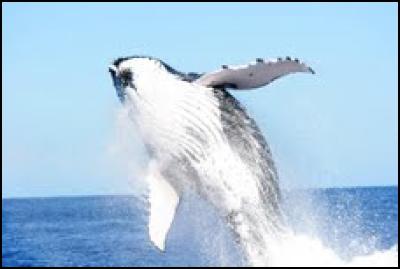Comprehensive Assessment of humpback whales in Oceania
Comprehensive Assessment of humpback whales in Oceania – completed

Humpback whales were once abundant around islands of the South Pacific during the winter breeding season. These populations nearly disappeared as a result of intensive hunting following World War II, particularly the large-scale illegal whaling by the Soviet Union in the 1960s.
More than 50 years after the end of commercial whaling, how many humpback whales are there in the South Pacific and to what extent have these populations recovered to pre-whaling numbers?
To answer these questions, members of the South Pacific Whale Research Consortium, supported by the Secretariat of the Pacific Regional Environment Programme (SPREP), have been working with the Scientific Committee of the International Whaling Commission to complete the first Comprehensive Assessment of humpback whales in the Southern Hemisphere.
The South Pacific Whale Research Consortium was formed 15 years ago to coordinate research by independent scientists both within and outside the region, and to provide management advice on the conservation of whales and dolphins in the waters of Oceania.
One of the Consortium’s primary goals has been to assess the recovery of humpback whales that once migrated from Antarctic feeding grounds to winter breeding grounds around Pacific island nations. Using photo-identification records and genetic samples from more than 2,000 individual whales, Consortium members provided the first estimates of abundance, descriptions of genetic differentiation and documentation of migratory movement for humpback whales throughout Oceania. SPREP was an early partner in this endeavour, and has continued to support the Consortium throughout the assessment process.
Now, the results of this long-term, collaborative research have been integrated into the first Comprehensive Assessment of humpback whales in Oceania, completed at this year’s meeting of the International Whaling Commission in Bled, Slovenia, in May. Using data contributed by the Consortium on the abundance, distribution, genetic differentiation and migratory movements of humpback whales from eastern Australia, New Caledonia, New Zealand, Tonga, American Samoa and Samoa, the Cook Islands and French Polynesia. The Scientific Committee developed a mathematical model to reconstruct the history of decline and slow recovery from 20th century whaling.
The Scientific Committee concluded that humpback whales in Oceania once numbered more than 14,000, but by 1966, they were reduced to less than 1% of this number. Since that time, whales in this vast region have increased slowly to about 5,000, or about 37% of their pre-exploitation numbers. Given the current rate of increase, it may be another three decades before this population is fully recovered.
“The Comprehensive Assessment confirmed how close the humpback whale population of Oceania came to extinction,” says Scott Baker, a Consortium member and Scientific Delegate to the International Whaling Commission. “There may have been fewer than 40 mature females surviving in this vast region after the catastrophic programme of illegal Soviet whaling in the early 1960s.”
The importance of understanding regional trends in humpback whales was also highlighted in a recent publication, led by Consortium members, on genetic isolation among oceanic populations. This isolation was found to be so profound that the authors propose to recognise three subspecies of humpback whale, including Megaptera novaeangliae australis from the Southern Hemisphere.
To help ensure that this recovery continues, Consortium members have worked with SPREP and the governments of New Caledonia, Niue, the Cook Islands, French Polynesia, Tonga and Samoa to implement conservation management policies.
“These island nations have declared large sanctuaries to promote the recovery of these depleted populations and provide the opportunity for local economic benefit through whale watching” says Mike Donoghue, Threatened and Migratory Species Adviser for SPREP.
The Consortium is planning to collaborate with SPREP to conduct further surveys and analysis to estimate the current status of Oceania humpbacks during 2016.
Funding for the Consortium’s research on humpback whales in Oceania has been provided by the International Fund for Animal Welfare (IFAW), the Australian Marine Mammal Centre through the Southern Ocean Research Partnership (SORP), Fonds Pacifique and the Secretariat of the Pacific Regional Environment Programme (SPREP).
ENDS…


 UN News: Indigenous Peoples Sidelined In Global Climate Fight, UN Warns
UN News: Indigenous Peoples Sidelined In Global Climate Fight, UN Warns Ocean Conservancy: Ocean Conservancy Condemns Deep Sea Mining Executive Order
Ocean Conservancy: Ocean Conservancy Condemns Deep Sea Mining Executive Order UNICEF Aotearoa NZ: Increases In Vaccine-Preventable Disease Outbreaks Threaten Years Of Progress, Warn WHO, UNICEF, Gavi
UNICEF Aotearoa NZ: Increases In Vaccine-Preventable Disease Outbreaks Threaten Years Of Progress, Warn WHO, UNICEF, Gavi Save The Children: Vanuatu - Families Find Climate-Smart Ways To Grow Crops 18 Months On From Cyclone Devastation
Save The Children: Vanuatu - Families Find Climate-Smart Ways To Grow Crops 18 Months On From Cyclone Devastation New Zealand Catholic Bishops Conference: Cardinal Dew Leaves For Pope's Funeral, Papal Election
New Zealand Catholic Bishops Conference: Cardinal Dew Leaves For Pope's Funeral, Papal Election The Nature Conservancy: Bird Species Lost From Wild For Almost 40 Years Lays First Eggs On New Island Home
The Nature Conservancy: Bird Species Lost From Wild For Almost 40 Years Lays First Eggs On New Island Home